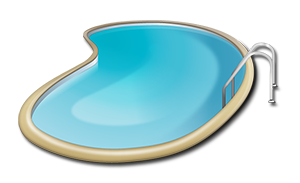 |
| Upcoming Events |
| There are currently no events |
| View All Events |
| 2024/2025 | |||
| Jan | 41 | 48 | |
| Feb | 31 | 28 | |
| Mar | 25 | 26 | |
| Apr | 30 | 25 | |
| May | 33 | ||
| Jun | 41 | ||
| Jul | 39 | ||
| Aug | 37 | ||
| Sep | 29 | ||
| Oct | 37 | ||
| Nov | 34 | ||
| Dec | 48 | ||
| Total | 425 | ||
| 2021 / 2022 /2023 Incidents | |||
| Jan | 42 | 38 | 40 |
| Feb | 42 | 37 | 44 |
| Mar | 31 | 40 | 25 |
| Apr | 28 | 28 | 44 |
| May | 27 | 38 | 38 |
| Jun | 39 | 33 | 37 |
| Jul | 39 | 37 | 52 |
| Aug | 45 | 49 | 40 |
| Sep | 61 | 34 | 26 |
| Oct | 30 | 48 | 40 |
| Nov | 37 | 32 | 39 |
| Dec | 33 | 52 | 41 |
| Total | 454 | 466 | 466 |
| Web Counters | ||||||
|
|
Fire Prevention
Smoke detectors are devices that automatically sound a warning when they sense smoke or other products of combustion. They are usually mounted on a wall or the ceiling. When people are warned early enough about a fire, they can escape before it spreads. You can purchase one starting at $6. Every year house fires kill thousands. Fire kills an estimated 4,000 Americans every year. Another 30,000 people are seriously injured by fire each year. Property damage from fire costs us at least $11.2 billion yearly. Most fire victims feel that fire would "never happen to them." Although we like to feel safe at home, about two-thirds of our nation's fire deaths happen in the victim's own home. The home is where we are at the greatest risk and where we must take the most precautions. Most deaths occur from inhaling smoke or poisonous gases, not from the flames. Most fatal fires occur in residential buildings between 11 p.m. and 6 a.m. when occupants are most likely asleep. Over 90 percent of fire deaths in buildings occur in residential dwellings. A Johns Hopkins University study, funded by the United States Fire Administration, found that 75 percent of residential fire deaths and 84 percent of residential fire injuries could have been prevented by smoke detectors. There are two basic types of smoke detectors: 1. Ionization detectors - Ionization detectors contain radioactive material that ionizes the air, making an electrical path. When smoke enters, the smoke molecules attach themselves to the ions. The change in electric current flow triggers the alarm. The radioactive material is called americium. It is a radioactive metallic element produced by bombardment of plutonium with high energy neutrons. The amount is very small and not harmful. 2. Photo-electric detectors - This type of detector contains a light source (usually a bulb) and a photocell, which is activated by light. Light from the bulb reflects off the smoke particles and is directed towards the photocell. The photocell then is activated to trigger the alarm. Choosing a smoke detector: When choosing a smoke detector, there are several things to consider. Think about which areas of the house you want to protect, where fire would be most dangerous, how many you will need, etc. The National Fire Protection Agency recommends that every home have a smoke detector outside each sleeping area (inside as well if members of the household sleep with the door closed) and on every level of the home, including the basement. The National Fire Alarm code requires a smoke detector inside each sleeping area for new construction. On floors without bedrooms, detectors should be installed in or near living areas, such as dens, living rooms or family rooms. Smoke detectors are not recommended for kitchens. Smoke Detector Installation: The placement of smoke detectors is particularly important. Sleeping areas need the most protection. One detector in a short hallway outside the bedroom area is usually adequate. Hallways longer than 30 feet should have one at each end. For maximum protection, install a detector in each bedroom. Be sure to keep the detector away from fireplaces and wood stoves to avoid false alarms. Place smoke detectors at the top of each stairwell and at the end of each long hallway. Smoke rises easily through stairwells. If you should put a smoke detector in your kitchen, be sure to keep it away from cooking fumes or smoking areas. It is important to properly mount a smoke detector. You can mount many detectors by yourself, however those connected to your household wiring should have their own separate circuit and be installed by a professional electrician. If you mount your detector on the ceiling, be sure to keep it at least 18 inches away from dead air space near walls and corners. If you mount it on the wall, place it six to 12 inches below the ceiling and away from corners. Keep them high because smoke rises. Never place them any closer than three feet from an air register that might re-circulate smoke. Do not place them near doorways or windows where drafts could impair the detector operation. Do not place them on an un-insulated exterior wall or ceiling. Temperature extremes can affect the batteries. Smoke Detector Maintenance: It is simple to keep smoke detectors in good condition. Always follow the manufacturer's instructions. Be sure to replace the batteries every year or as needed. Most models will make a chirping, popping or beeping sound when the battery is losing its charge. When this sound is heard, install a fresh battery, preferably an alkaline type. Remember, every three years to change the bulbs. Keep extras handy. Check the smoke detector every month by releasing smoke or pushing the “test” button. Clean the detector face and grillwork often to remove dust and grease. Never paint a smoke detector as it will hamper its function. Check your detector if you have been away from home. Smoke Detectors make great housewarming (or any time) gifts. It is an interesting present that can save lives and it shows that you care.
What is carbon monoxide (CO) and how is it produced? Carbon monoxide (CO) is a deadly, colorless, odorless, poisonous gas. It is produced by the incomplete burning of various fuels, including coal, wood, charcoal, oil, kerosene, propane, and natural gas. Products and equipment powered by internal combustion engines such as portable generators, cars, lawn mowers, and power washers also produce CO. How many people are unintentionally poisoned by CO? On average, about 170 people in the United States die every year from CO produced by non-automotive consumer products. These products include malfunctioning fuel-burning appliances such as furnaces, ranges, water heaters and room heaters; engine-powered equipment such as portable generators; fireplaces; and charcoal that is burned in homes and other enclosed areas. In 2005 alone, CPSC staff is aware of at least 94 generator-related CO poisoning deaths. Forty-seven of these deaths were known to have occurred during power outages due to severe weather, including Hurricane Katrina. Still others die from CO produced by non-consumer products, such as cars left running in attached garages. The Centers for Disease Control and Prevention estimates that several thousand people go to hospital emergency rooms every year to be treated for CO poisoning. What are the symptoms of CO poisoning? Because CO is odorless, colorless, and otherwise undetectable to the human senses, people may not know that they are being exposed. The initial symptoms of low to moderate CO poisoning are like the flu (but without the fever). They include:
High level CO poisoning results in progressively more severe symptoms, including:
Symptom severity is related to both the CO level and the duration of exposure. For slowly developing residential CO problems, occupants and/or physicians can mistake mild to moderate CO poisoning symptoms for the flu, which sometimes results in tragic deaths. For rapidly developing, high level CO exposures (e.g., associated with use of generators in residential spaces), victims can rapidly become mentally confused, and can lose muscle control without having first experienced milder symptoms; they will likely die if not rescued. How can I prevent CO poisoning?
What CO level is dangerous to my health? The health effects of CO depend on the CO concentration and length of exposure, as well as everyone’s health condition. CO concentration is measured in parts per million (ppm). Most people will not experience any symptoms from prolonged exposure to CO levels of approximately 1 to 70 ppm, but some heart patients might experience an increase in chest pain. As CO levels increase and remain above 70 ppm, symptoms become more noticeable and can include headache, fatigue, and nausea. At sustained CO concentrations above 150 to 200 ppm, disorientation, unconsciousness, and death are possible. What should I do if I am experiencing symptoms of CO poisoning and do not have a CO alarm, or my CO alarm is not going off? If you think you are experiencing any of the symptoms of CO poisoning, get outside to fresh air immediately. Leave the home and call your fire department to report your symptoms from a neighbor’s home. You could lose consciousness and die if you stay in the home. It is also important to contact a doctor immediately for a proper diagnosis. Tell your doctor that you suspect CO poisoning is causing your problems. Prompt medical attention is important if you are experiencing any symptoms of CO poisoning. If the doctor confirms CO poisoning, make sure a qualified service person checks the appliances for proper operation before reusing them. Are CO alarms reliable? CO alarms always have been and still are designed to alarm before potentially life-threatening levels of CO are reached. The safety standards for CO alarms have been continually improved and currently marketed CO alarms are not as susceptible to nuisance alarms as earlier models. How should a consumer test a CO alarm to make sure it is working? Consumers should follow the manufacturer's instructions. Using a test button tests whether the circuitry is operating correctly, not the accuracy of the sensor. Alarms have a recommended replacement age, which can be obtained from the product literature or from the manufacturer. How should I install a CO Alarm? CO alarms should be installed according to the manufacturer's instructions. CPSC recommends that one CO alarm be installed in the hallway outside the bedrooms in each separate sleeping area of the home. CO alarms may be installed into a plug-in receptacle or high on the wall. Hard wired or plug-in CO alarms should have battery backup. Avoid locations that are near heating vents or that can be covered by furniture or draperies. CPSC does not recommend installing CO alarms in kitchens or above fuel-burning appliances. What should you do when the CO alarm sounds? Never ignore an alarming CO alarm! It is warning you of a potentially deadly hazard.
If authorities allow you to return to your home, and your alarm reactivates within a 24-hour period, repeat steps 1, 2 and 3 and call a qualified appliance technician to investigate for sources of CO from all fuel burning equipment and appliances, and inspect for proper operation of this equipment. If problems are identified during this inspection, have the equipment serviced immediately. Note any combustion equipment not inspected by the technician and consult the manufacturers’ instructions, or contact the manufacturers directly, for more information about CO safety and this equipment. Make sure that motor vehicles are not, and have not been, operating in an attached garage or adjacent to the residence. Do some cities require that CO alarms be installed? Many states and local jurisdictions now require CO alarms be installed in residences. Check with your local building code official to find out about the requirements in your location. Should CO alarms be used in motor homes and other recreational vehicles? CO alarms are available for boats and recreational vehicles and should be used. The Recreation Vehicle Industry Association requires CO alarms in motor homes and in towable recreational vehicles that have a generator or are prepped for a generator.
FIREPLACE SAFETY Nothing is quite as cozy as a warm, crackling fire in the fireplace. But if you do not take some simple safety precautions, that fire could turn deadly. Each year, roughly 6,000 people end up in the emergency room for injuries associated with fireplaces and fireplace equipment... most of which involve children under five years old. Approximately 14,000 early house fires are start in a fireplace. Most of these fires escalated beyond the fireplace because of an overloaded fire, a damaged fireplace (missing bricks), obstructed flues, ignition of nearby combustibles, and flying sparks. Keep your family safe and warm by following these fireplace safety tips: • Inspect the fireplace. Make sure it has adequate protective linings and smoke ducts. Check to see that the chimney is clear and in good repair. • If you are installing a factory-made fireplace, it should not be located near any combustible materials. It should also have adequate flame and heat barriers. • Have chimneys inspected annually, and cleaned as necessary, by a CSIA (Chimney Safety Institute of America) Certified Chimney Sweep. This reduces the risk of fires and carbon monoxide poisonings due to creosote buildup or obstructions in the chimneys. To locate a certified sweep, visit the CSIA Web site at www.csia.org or call 1-800-536-0118. A certified sweep can also perform maintenance on your wood stove or help remove gas logs from a fireplace. • Keep the top of chimneys clear of tree limbs or debris. • Install a chimney cap to keep debris and animals out of the chimney. • Always open the damper before lighting the fire and keep it open until the ashes are cool. This will avert the build-up of poisonous gases, such as carbon monoxide. • Fuel the fire safely. For burning firewood in wood stoves or fireplaces, choose well-seasoned wood that has been dried for a minimum of six months to a year and stored properly. • Build it right. Place firewood or fire logs at the rear of the fireplace on a supporting grate. To start the fire, use a firelighter. • Never use gasoline, charcoal lighter or other fuel to light or relight a fire because the vapors can explode. Never keep flammable fuels near a fire. Vapors can travel the length of a room and explode. • Do not use coal or charcoal in a fireplace because of the danger of carbon monoxide build-up. Do not burn trash or gift wrap in the fireplace because polystyrene foam and other coated materials can generate deadly fumes. Flying paper embers could also ignite the roof. • Do not treat artificial logs like real logs. Artificial logs are usually made of sawdust and wax and have special burning properties. Be sure to read the instructions on the logs and follow them carefully. Use just one log at a time and do not add another log until the fire is completely out. Never add an artificial log to a natural wood fire that is already burning. Wait at least two hours before adding an artificial log to a natural log fire because it could cause a flare-up. • Do not poke artificial logs because the flaming wax could stick to the poker and drop onto the floor or carpet. Poking a log could also cause a flare-up. • Home rolled newspaper logs should never be soaked in flammable fuels of any kind because of the severe danger of explosion. Soaking the newspaper in water either before rolling or during rolling removes the clay content and will provide a better burning log. Then, stack the logs on end and let them dry for two weeks in the basement. When lighting the newspaper logs, use kindling just as you would for a regular fire. • Do not overload the fireplace. Large fires can lead to overheating of wall or roof materials, particularly if the fireplace is constructed of metal. • Always use a screen around the fireplace to keep sparks from flying out and to protect children and adults from accidental clothing ignition. • Warn children about the danger of fire. Do not let them play with fire. • Keep flammable materials such as carpets, pillows, furniture, or papers away from the fireplace area. • At holiday time, make sure the Christmas tree is not close enough to be ignited by a spark. Be especially careful of accidentally igniting holiday wrapping papers. • Always make sure that the fire is completely extinguished before going to bed for the night or when leaving the house
BARBECUE GRILL SAFETY Check your grill thoroughly for leaks, cracking or brittleness before using it.
Make sure the grill is at least 10 feet away from your house, garage, or trees. Store and use your grill on a large flat surface that cannot burn (i.e.- concrete or asphalt). Do not use grills in a garage, porch, deck or on top of anything that can catch on fire. Never use a propane barbecue grill on a balcony, terrace, or roof. It is both dangerous and illegal. Keep children away from fires and grills. It is a good idea to establish a safety zone around the grill and instruct children to remain outside the zone. A chalk line works great for this purpose. Have a fire extinguisher, a garden hose attached to a water supply, or at least 16-quarts of water close by in case of a fire. Before getting a propane cylinder filled, check for any damages to it. Never transport or store propane cylinders in the trunk of your automobile. DURING BARBECUING:
AFTER BARBECUING:
IN CASE OF A BARBECUE FIRE:
HOLIDAY SEASON SAFETY Christmas is a special time of year and should not end in tragedy because of the extra hazards presented due to the holidays. Here is some advice on how to keep your family and your home safe this holiday season: Christmas Lights: Decorative lights get used much less often than your everyday lights, and they need more care. Check the fuses are the right type (see the box for the Holiday Decorations: Decorations made of light tissue paper or cardboard burn easily. Keep children away from light sets and electrical decorations. All lights present the problem of shock and casualty hazards for curious kids. When you are stringing the lights on your tree, be careful how you place them. Keep all bulbs turned away from gifts and paper ornaments. Lights in windows can cause curtains and drapes to ignite. Candles are a traditional and beautiful part of the season. But they are still a direct source of fire in your home. Keep candles a safe distance from other things. And remember that a flickering flame is a thing of fascination to little children. Keep candles out of their reach. • Never use lighted candles on a tree or near other evergreens. Christmas Trees Safety: Special fire safety precautions need to be taken when keeping a live tree in the house. A burning tree can rapidly fill a room with fire and deadly gases. When you bring a tree home, cut about an inch off the bottom of its trunk. This will remove the dried end and allow the tree to absorb water. Make checkerboard cuts into the base at different angles to make a greater surface for water absorption. Always turn off lights on trees and other decorations when you go to bed or leave your home. A short circuit in any of this equipment could cause a fire. Never use electric lights on a metallic tree. Damaged insulation in lighting on a metallic tree could cause the entire tree to be charged with electricity. To avoid this danger, use colored spotlights above or beside a metal tree, never fastened onto it.
Needles on fresh trees should be green and hard to pull back from the branches, and the needle should not break if the tree has been freshly cut. The trunk should be sticky to the touch. Old trees can be identified by bouncing the tree trunk on the ground. If many needles fall off, the tree has been cut too long, has probably dried out, and is a fire hazard. Caring for Your Christmas Tree: Do not place your tree close to a heat source, including a fireplace or heat vent. The heat will dry out the tree, causing it to be more easily ignited by heat, flame, or sparks. Be careful not to drop or flick cigarette ashes near a tree. Do not put your live tree up too early or leave it up for longer than two weeks. Keep the tree stand always filled with water. Disposing of Your Christmas Tree: Never put tree branches or needles in a fireplace or wood burning stove. When the tree becomes dry, discard it promptly. The best way to dispose of your tree is by taking it to a recycling center or having it hauled away by a community pick-up service. Safety Oriented Christmas Gifts: One of the best Christmas gifts you can get someone is a smoke detector. A smoke detector is worth so much, possibly a loved one's life, yet so inexpensive. Over 90 percent of fire deaths occur in residential dwellings between 11 p.m. and 6 a.m. when occupants are asleep. Smoke detectors alert occupants when a fire is still small and there is still time to escape. Holiday Plants: Holly and mistletoe can be fatal to a small child and the smaller the child, the smaller the dose that can cause serious medical problems. Poinsettia leaves are not fatal if swallowed but can cause a skin rash and an upset stomach. Call 9-1-1 if your children ingest either of these holiday plants.
POOL SAFETY Unfortunately, it takes just seconds for a child to drown. Drowning is the leading cause of death in many states for children under the age of five. Most of these children drown in their own backyard swimming pool, but others drown in buckets, bathtubs, toilets, dog water bowls, canals, and ponds. Small children are top-heavy, and they do not have the upper body strength to lift themselves out of one of these dangerous situations. Even if the child survives the incident, they are often left with permanent brain damage. • Know where your children are at all times
|
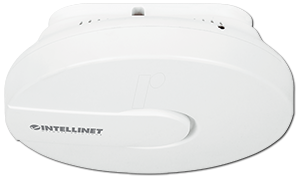

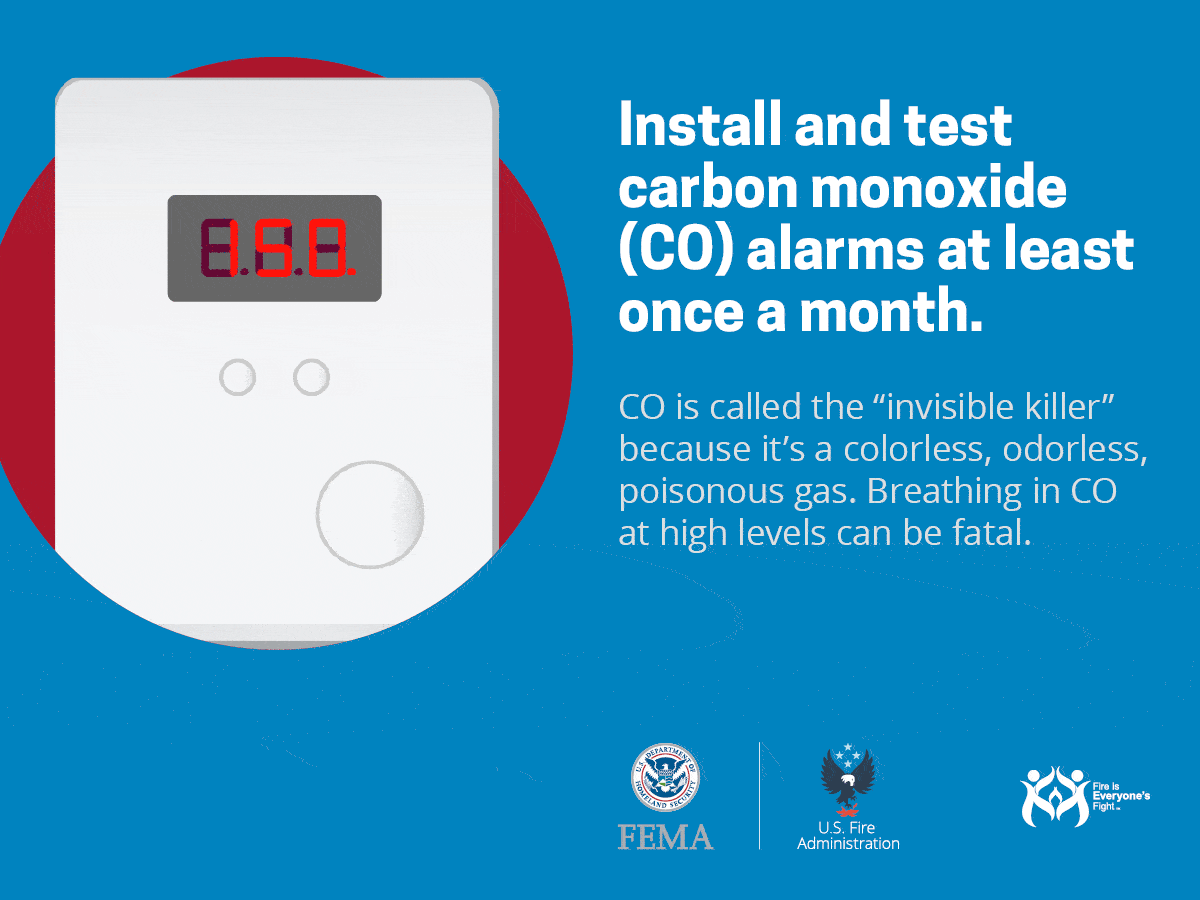
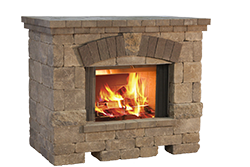
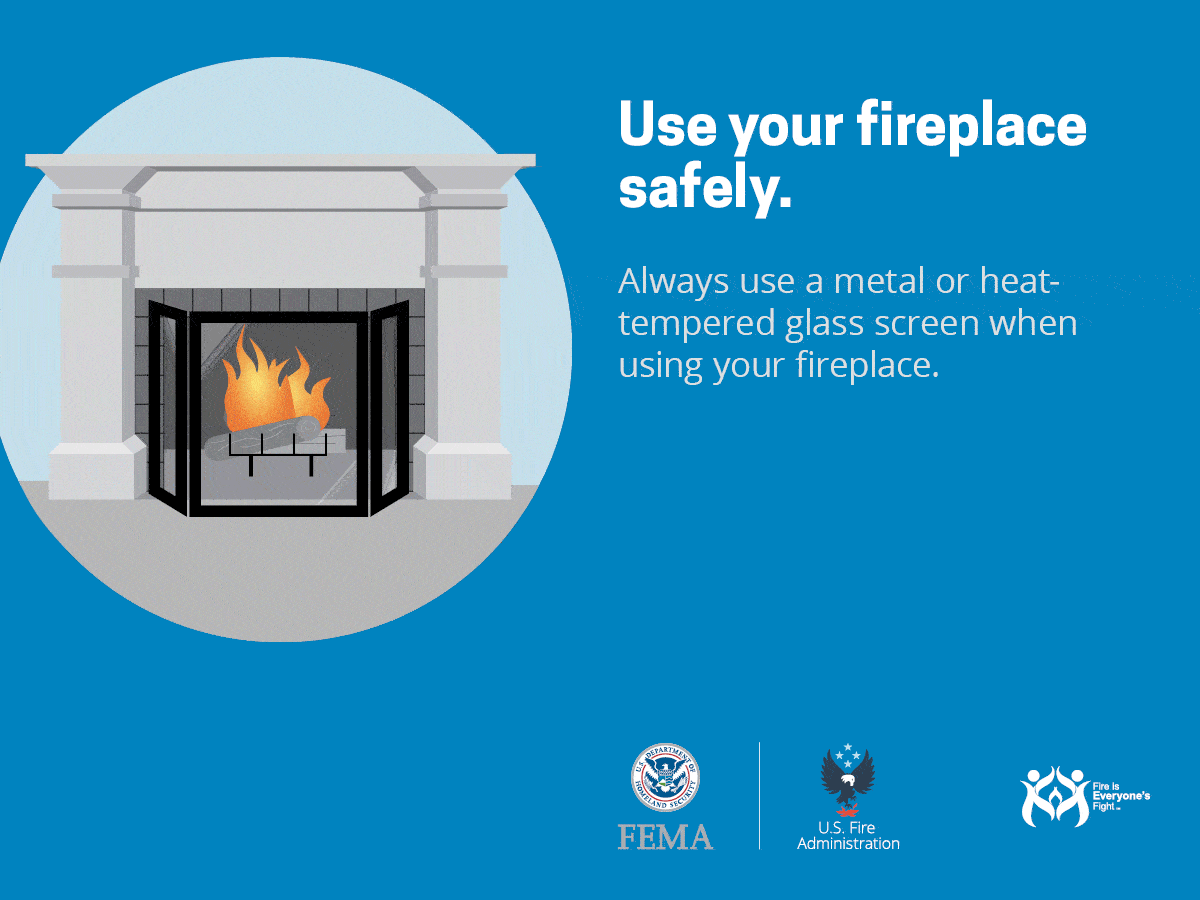
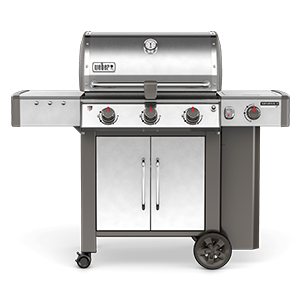 Check the tubes leading to the burner regularly for blockages. Check with your specific grill manufacturer's instructions.
Check the tubes leading to the burner regularly for blockages. Check with your specific grill manufacturer's instructions.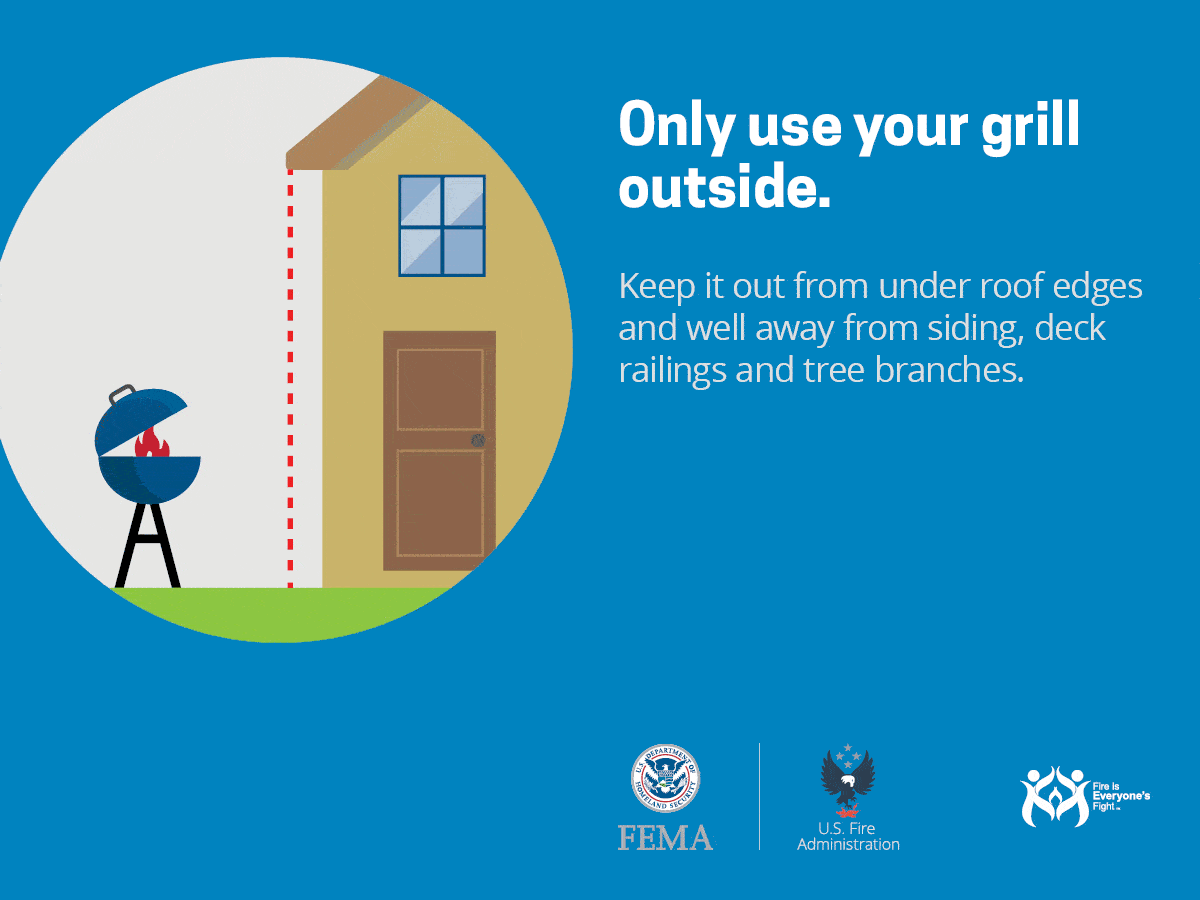
 maximum size of fuse you should use).
maximum size of fuse you should use). Selecting a Tree for Christmas:
Selecting a Tree for Christmas: